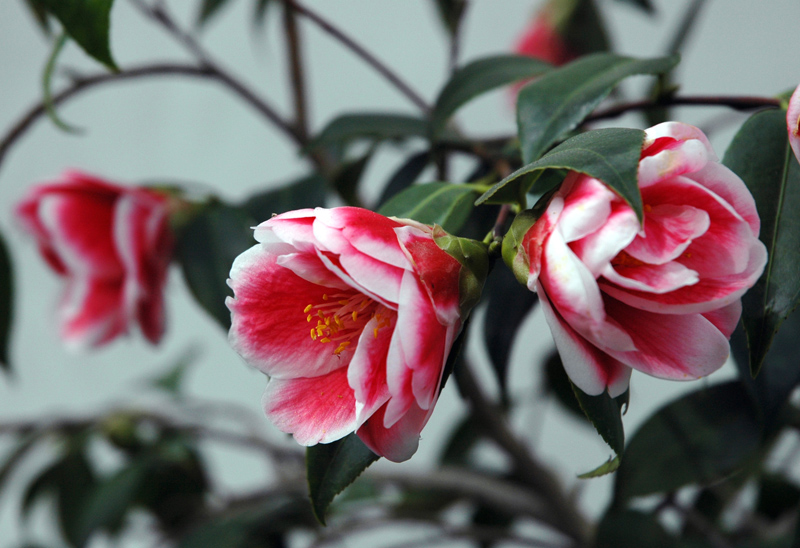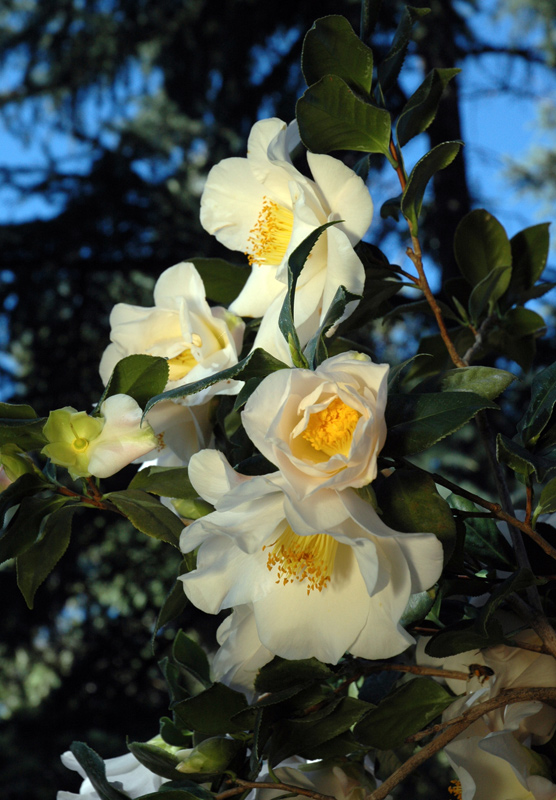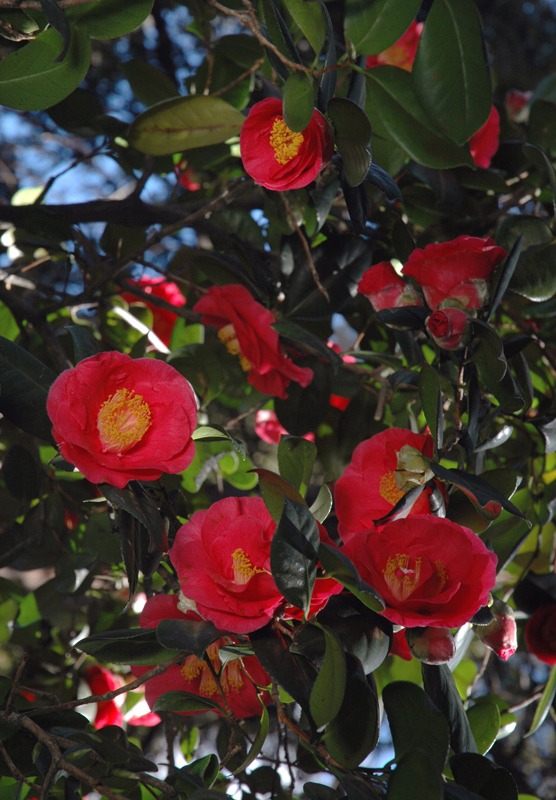The blog of The Huntington Library, Art Museum, and Botanical Gardens.
Camellia 101
Posted on Mon., Feb. 3, 2014 by

February is an ideal time to learn about camellias—and to enjoy them. Pictured: Camellia'Tama Peacock'. Photos by Lisa Blackburn.
The best way to learn about something is to talk to an expert. Or better yet, a whole bunch of them. And if you're interested in learning about camellias then you're in luck, because a whole bunch of knowledgeable folks will be at The Huntington on Saturday and Sunday, Feb. 8–9, eager to answer all your questions and talk about their favorite flower during the 42nd annual Camellia Show and Sale. They'll also be showing off some incredible prize-winning blooms. The event is co-sponsored by The Huntington and the Southern California Camellia Society. Hours are from 1 to 4:30 p.m. on Saturday (following the morning judging) and from 10:30 a.m. to 4:30 p.m. on Sunday. The show will be on view in the Frances Lasker Brody Botanical Center, and it's included with general admission.

Camellia japonica'White Bouquet'
One thing you're bound to learn if you come to the show is that February is also a great month to see camellias in bloom in the gardens. The Huntington’s collection includes nearly 80 different camellia species—sasanqua, japonica, reticulata, hiemalis, vernalis, and tunghinensis, among others—and some 1,200 different varieties. Many of them are at the peak of their bloom right now in the North Vista, the Japanese Garden, and the Chinese Garden.
Camellias are native to China and Japan and made their way to the Western world in the 18th century. The descendents of some of the earliest camellias to arrive in England from Asia are represented here in the Botanical Gardens, including Camellia japonica ‘Alba Plena’ and C. ‘Captain Rawes’. Many species camellias and modern hybrids also grace the landscape.
“What makes this collection stand out is not only its size and completeness, but also the number of rare and historic cultivars it contains,” says David MacLaren, curator of Asian gardens at The Huntington. According to MacLaren, the most historic individual plant in the collection is C. japonica ‘California,’ which is believed to be the oldest surviving camellia on record in Southern California. This specimen arrived on a tramp steamer as an unnamed seedling in 1888 and had two previous homes before being donated to The Huntington in 2003. Look for it, with its large rose-red flowers, on the east side of the road between the Library and the North Vista fountain.

Camellia japonica'California'
The collection continues to grow under MacLaren’s care. New plantings of reticulata camellias—first introduced into the West from China’s Yunnan Province in 1948—can be seen in and around the Chinese Garden, a tribute to their native roots and to the role of the flower in Chinese culture.
And a small “plantation” of tea camellias, C. sinensis, has been planted on a slope alongside the Japanese Garden stream. The tender young leaves of the C. sinensis are the source of all black, oolong, and green teas. And what could be more perfect, after a stroll through the camellias on a winter’s day, than to sit on a terrace overlooking a lake and enjoy a hot cup of tea? Chinese teas and light refreshments are available during public hours in the Chinese Garden teahouse. (While you're here, be sure to check out the progress on the two new pavilions in the Chinese Garden. They'll be making their official public debut on March 8.)
Lisa Blackburn is communications coordinator at The Huntington.